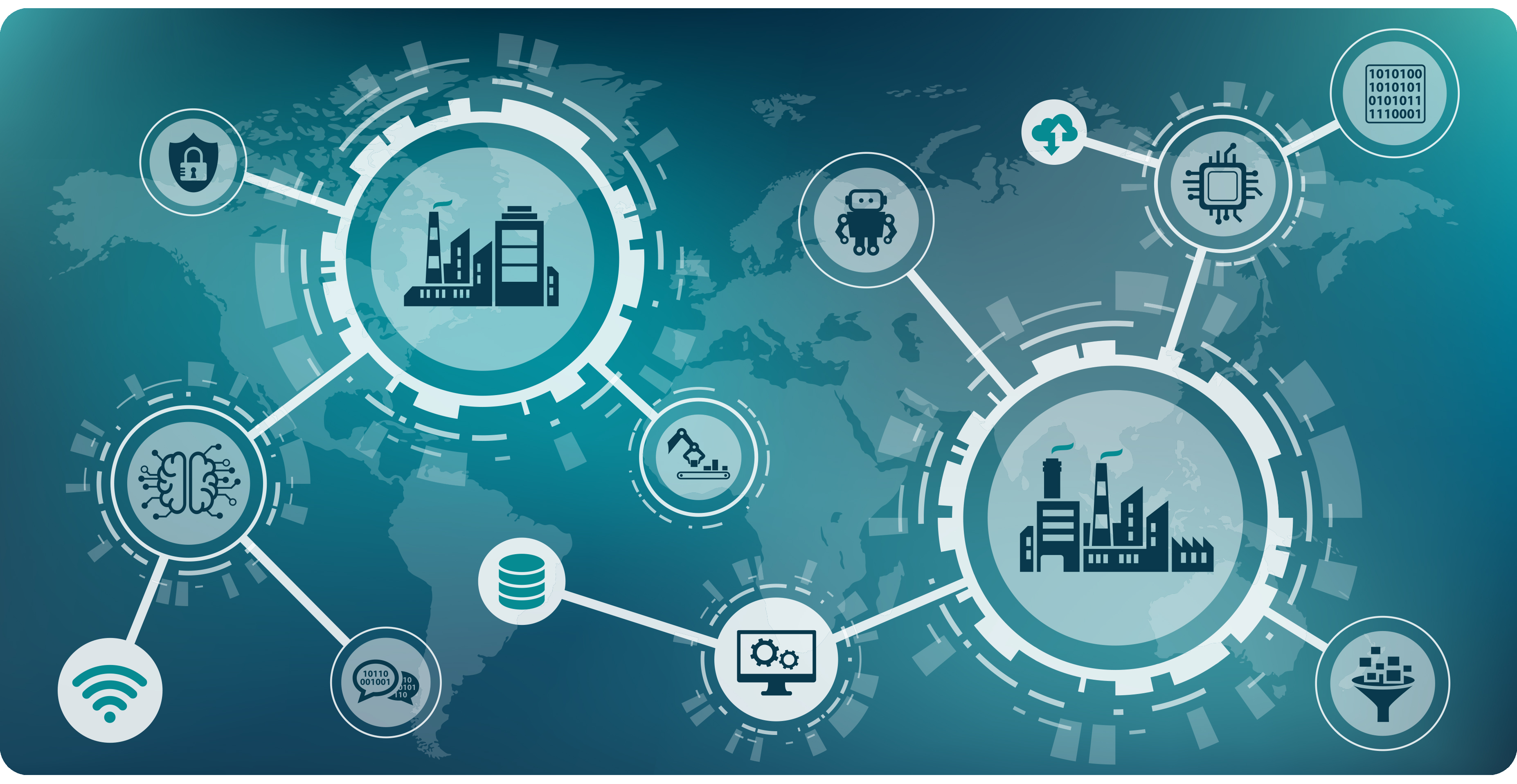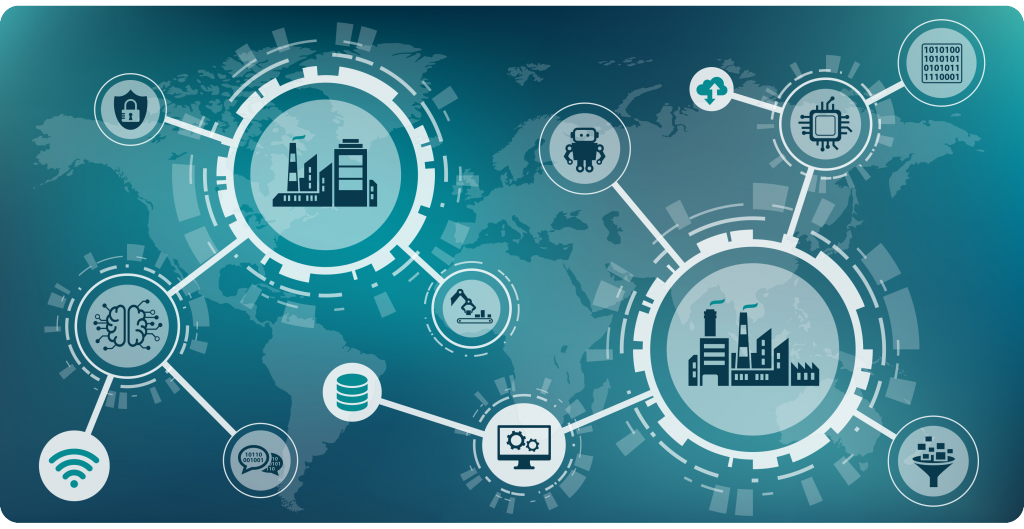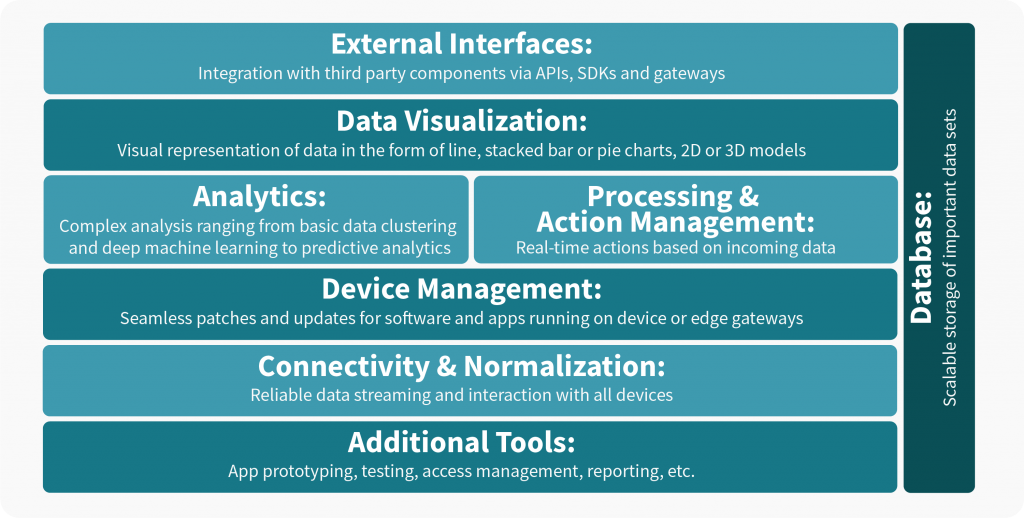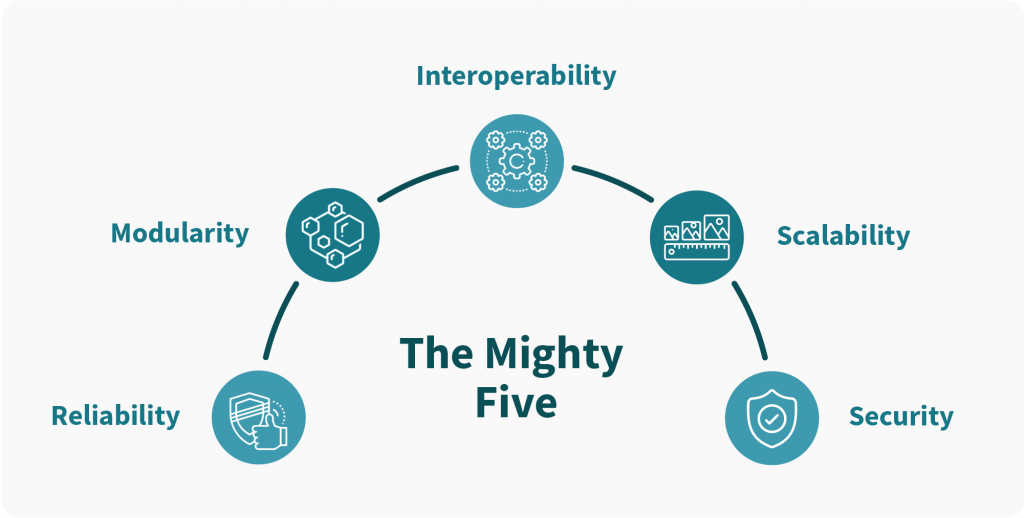Install, connect and rock. No need to take care of your connectivity speed and all that good stuff related to communication protocols, compatibility and interoperability. From the very start, you chose the right IoT platform from the right vendor who took care of everything. But how did you do that?
written by:
Anastasia Borodinets
Install, connect and rock. No need to take care of your connectivity speed and all that good stuff related to communication protocols, compatibility and interoperability. From the very start, you chose the right IoT platform from the right vendor who took care of everything. But how did you do that?
First, you read our previous article about the business aspects of choosing IoT tools. Secondly, you thoroughly went through technical characteristics of your solution-to-be and found the fine line making the perfect match between your budget and your needs. Below is a brief summary of how you coped with that task.
Don’t get lost in choice
The diversity of IoT platforms and complex IoT offerings lead to a considerable degree of confusion. While designing and developing your IoT solution, there are a few architecture considerations for IoT platform that have an integral role in ensuring success of your solution.
The architecture may consist of a software platform, an application development platform or an analytics platform. In a more sophisticated form, a true end-to-end IoT platform consists of eight important architectural building blocks:
Components of an IoT Application Enablement Platform
There are five key characteristics of an IoT platform you should pay special attention to.
Reliability
One of the basic requirements of an IoT platform is to be stable and dependable from the service perspective, i. e. to provide speedy failover and disaster recovery solutions. One can hardly trust the data if the connections are spotty, the platform is doubtful, or data processing is time-consuming.
Modularity
Modularity is of high importance during the implementation of an IoT solution since it ensures quick deployment of an IoT platform in order to meet specific business requirements. For example, your IoT Platform may follow the concept of modules – logical and operational parts with their own functional roles.
Interoperability
IoT platforms should be communicable, operable, and programmable across devices, regardless of brand, model, manufacturer, or industry. The vision is that connectivity between things works no matter which equipment is installed. With support for any protocol, your IoT solution should ensure interoperability and a future-proof guarantee that new protocols will be supported and seamlessly integrated. Competitive advantage can be achieved by a broad set of tools which promote interoperability throughout the IoT platform and among a heterogeneous mix of devices.
Scalability
Along with the growth of your business, your platform needs to be able to scale accordingly, without compromising the integrity, security, reliability, and functionality of your product along the way. Prior to cloud platforms, IT departments would procure additional hardware and maintain underutilized capacity in order to handle the increasing growth of data emitted by devices (i. e. telemetry). With the IoT, an organization is challenged with managing, monitoring, and securing the warehouse of data as the data set grows. An inherent requirement for your IoT platform is to be able to scale horizontally — adding more servers and capacity rather than upgrading the existing ones. For example, in that way your product can manage billions of transactions in real-time and at a global scale. Its scalable architecture should be adjustable to any industrial environment. From tiny to huge, it would be perfect if your platform can handle any scale of IoT implementation and offers extremely high availability and robustness.
Security
All IoT vendors need to understand potential security threats and address them asap to ensure that your data or that of your customers, isn’t compromised. The challenge here is to secure both data and communication channels because devices may transmit large amounts of sensitive data. End users of IoT apps may also have the ability to exercise direct control over a device. Although many services encrypt data once it reaches their data center, we should note that data is more vulnerable when it’s in transit.
Surely, we have covered only some of the typical characteristics above. There are varieties of platforms providing domain specific characteristics, those unique to the industry or even to the end application. The ability to integrate the above key characteristics, and then customize them in ways that make sense for your IoT solution, will make the difference between the platform of your choice and the others. Your IoT Platform should be designed to be the future-proof core of your IoT product, both in terms of connecting things to the Internet – reliably, securely, cost effectively and at scale – and in terms of delivering the backing app logic for value-added services. By using IoT platforms, companies will be able to build flexible and interoperable solutions. Then they can scale them to meet exponential device growth, with an ability to manage cost, while building on top of extremely secure computing infrastructure.
Still have some unresolved issues? Try this ultimate checklist!
1. Connectivity
How well does the vendor’s network coverage fit your current and future business initiatives? Make sure that your IoT platform can connect with any device or sensor over any network and provide flexible deployment choices with SaaS, PaaS, on premises, hybrid or edge.
2. Method of Connectivity
What type of connectivity do you require? Do you need a Wi-Fi or cellular connectivity for your IoT project? You should assess these needs and see how the vendor can address them.
3. Future-Proof
Your solution should also be low-code and future-ready with solutions for enterprise integration, API management, predictive analytics and machine learning, as well as business process and portfolio management.
4. Market Longevity
How long has the selected IoT platform been offering services? The IoT space is relatively new, but it is rapidly expanding. An IoT platform that has been in business for 4+ years is usually ideal.
5. Type of Service
How does your vendor describe and sell the IoT platform? Some services are simply connectivity platforms, while others can be categorized as end-to-end solutions. The latter offer the hardware, software, and connectivity. You need to evaluate what your business needs. How may your needs change over time?
6. Geographic Coverage
Does your software vendor provide an embedded sim card with global support? Does the IoT platform cover the regions you need?
7. Data Plan
Does the vendor offer a reasonable data plan? You may need the possibility to pause or suspend your services and to control how much data that is used.
8. Security / Privacy
Examine how your software vendor dealt with security and privacy issues in the past and assess their security content. You need to review how their platform faces security issues.
9. Managed Integrations / API Access
How does your vendor unite all the complicated IoT stuff like modems, sim cards, diagnostics, updates, cloud connections, security or app layers into a simple package that your engineering team won’t have to bother about?
10. Data Access
How will you integrate the data accumulated by means of the IoT platform with your enterprise’s back ends and the existing cloud service? How do you plan to process this data? Is the service adequate enough for those needs?
11. Domain Experts / Engineering Services / Partner Collaboration
IoT deployment is a complex task and you need a reliable partner who can assist you in the product development process. Does the IoT platform help you address these needs?
12. IoT Ecosystem
Take your time to learn and comprehend the relationships between the IoT platform’s services. This will help you understand how these services can help you build your own product. If something is not clear for you, talk to a sales representative.
13. IoT Roadmap
IoT platforms can only expand from here on out. Is the IoT platform’s roadmap consistent with your organization’s needs? Does your software vendor plan to expand into connectivity, data, hardware? How can that help you?
14. Hardware
Does your vendor offer any off-the-shelf applications, developer kits, or starter packages for the specific use case you are aiming at? You will probably have to do some customization, but not having to start from scratch can save some time and effort.
15. Hardware Agnosticism
Hardware Agnosticism is a code phrase for “we handle the software only, and you’re totally on your own when it comes to building all the hard stuff.” Don’t fall for it.
16. Device Management
How does your software developer allow you to monitor and manage IoT devices that are out there in the field?
17. OTA Firmware Updates
How does your developer allow you to send updates and fix bugs on your devices in a remote mode? Is it a simple or complicated process? You are most likely to have it simple.
In the end...
It’s better to understand that some companies aren’t using IoT platforms — they’re creating their own platforms in-house. But, depending on how you want to go to market, it may be smart to do some research in the sector of pre-built options. Depending on your situation, you may save a lot of time and money by partnering with a reliable partner who has proven expertise in this domain.
This may be the case with Qulix Systems. Feel free to contact us via the website or e-mail regarding any issues related to development of IoT solutions.

Contacts
Feel free to get in touch with us! Use this contact form for an ASAP response.
Call us at +44 151 528 8015
E-mail us at request@qulix.com










